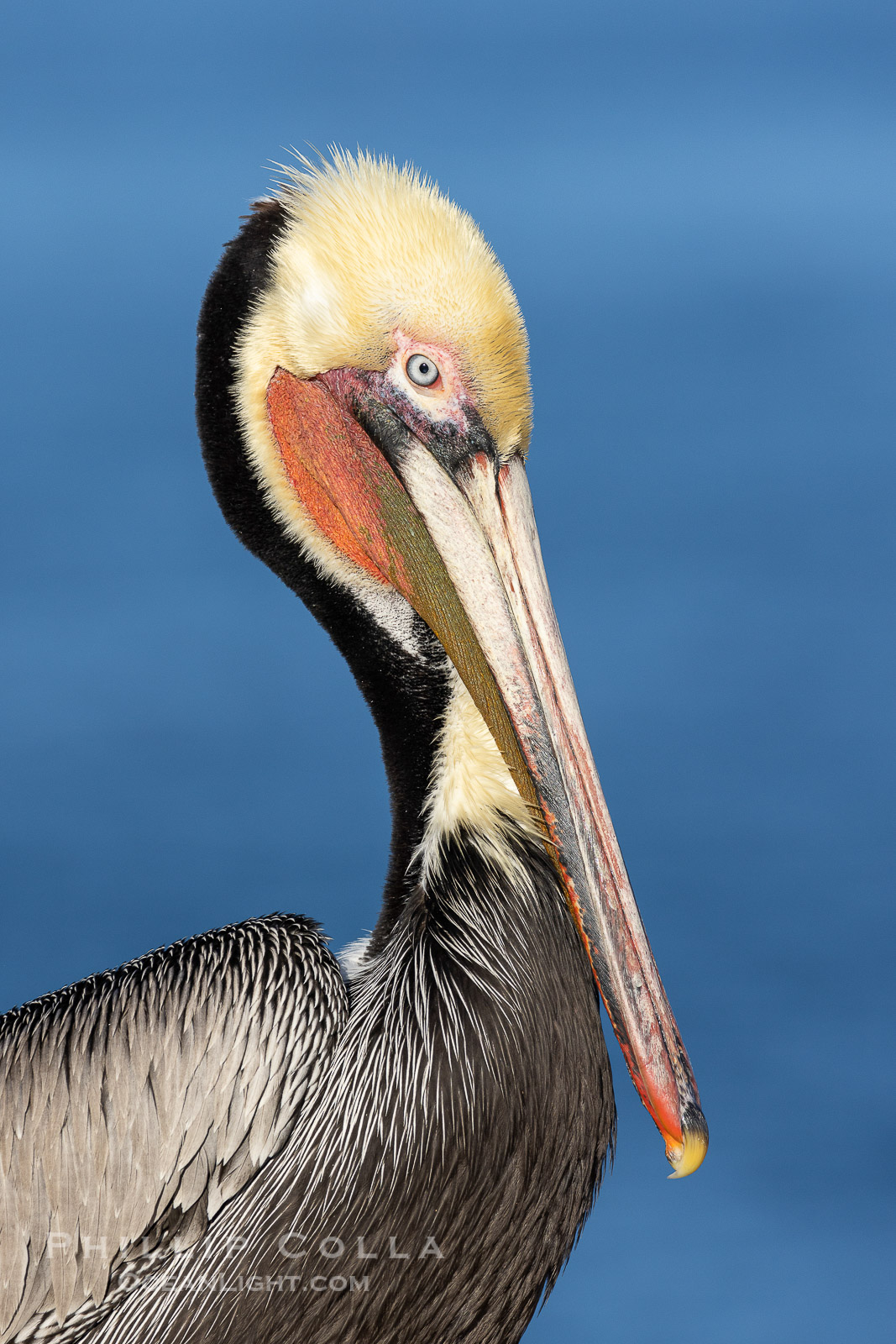I unabashedly use front lighting on my subjects, especially those photographed with long lenses where separation between subject and background can be achieved through depth of field. Side- and back-lighting have their places, and are often effective at rendering a subject in an interesting or compelling way. But I tend toward portraiture with my subjects, both topside and underwater, and I like to illustrate the color(s) of the subject as well as hopefully include a catchlight in the eye. So in situations where I can easily separate my subject from the background through limited depth of field (with a “defocused background”), in order to produce an evenly-lit portrait with few or no shadows I keep the sun at my back. In fact, in such situations when I am shooting things that don’t move, such as pelicans preening on cliffs, I will slowly and quietly move to a position where my shadow is pointing directly or nearly so at the subject. I will keep shooting portraits as the subject’s glance and head tilt changes, hoping that later upon review one of the images has a stronger catchlight and head/eye angle than all the others. Note that in the image above and in two of the portraits below, the catchlight is almost perfectly centered left/right in the pupil of the eye – that can only happen with the sun in line with the axis of the lens and the bird’s eye looking directly at the camera (or nearly so).
I’ve been shooting California brown pelicans at the La Jolla cliffs often recently (the weather has been perfect for it) and see photographers shooting at the “wrong” angle to the sun. At the pelican spot in particular, I see them shooting too far to the right, i.e., shooting toward the north while the sun is rising in the east. In other words, they have the axis of the lens at nearly right angles to the sun. This makes for heavy side lighting and too many shadows, at least for images that I wish to make. I simply don’t bother with taking those shots any more; I don’t have time to edit those images and I know that ultimately I won’t keep any of them. I know where the birds will likely approach given the wind and surf conditions and I will set up (if there is space, sometimes there are too many birds) in such as way as to ensure my shadow is pointing toward them at the moment I am likely to press the shutter. Then I wait. I don’t spend energy on subjects at other angles to the sun. Yes this means I miss ops but so be it, when the perfectly-lit bird comes through I want to be ready for that.
Below are a few recent examples of front-lit portraits, with the light as flat as I can arrange to make it. Note that there is little if any evidence of shadow, and all the beautiful details of the each subject’s face are plain to see. I’ve included a few underwater images as well to emphasize that the keep-the-sun-at-your-back principle applies almost universally. Granted, some photographers do not like front-lit subjects in flat, warm, beautiful early morning light. If you are one of those, why have you read this far? Cheers, and thanks for looking!

California Brown Pelican head throw, stretching its throat to keep it flexible and healthy.
Image ID: 30304
Species: Brown pelican, Pelecanus occidentalis, Pelecanus occidentalis californicus
Location: La Jolla, California, USA

California Brown Pelican In Flight, La Jolla California.
Image ID: 36624
Species: Brown Pelican, Pelecanus occidentalis californicus, Pelecanus occidentalis
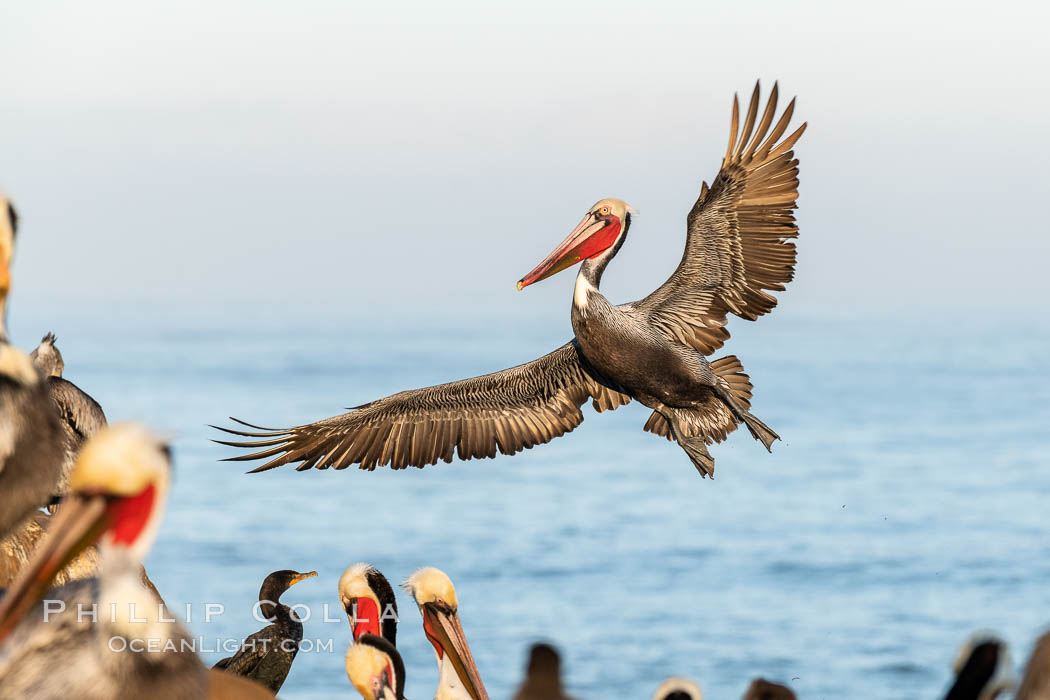
California brown pelican in flight, spreading wings wide to slow in anticipation of landing on seacliffs. Note the classic winter breeding plumage, with bright red throat, yellow and white head and neck, and brown hind neck.
Image ID: 36679
Species: Brown pelican, Pelecanus occidentalis, Pelecanus occidentalis californicus
Location: La Jolla, California, USA

Brown pelican preening, cleaning its feathers after foraging on the ocean, with distinctive winter breeding plumage with distinctive dark brown nape, yellow head feathers, although this one displays a yellow (rather than the usual red) gular throat pouch.
Image ID: 36683
Species: Brown pelican, Pelecanus occidentalis, Pelecanus occidentalis californicus
Location: La Jolla, California, USA

Brown pelican portrait, displaying winter plumage with distinctive yellow head feathers and colorful gular throat pouch.
Image ID: 36700
Species: Brown pelican, Pelecanus occidentalis, Pelecanus occidentalis californicus
Location: La Jolla, California, USA
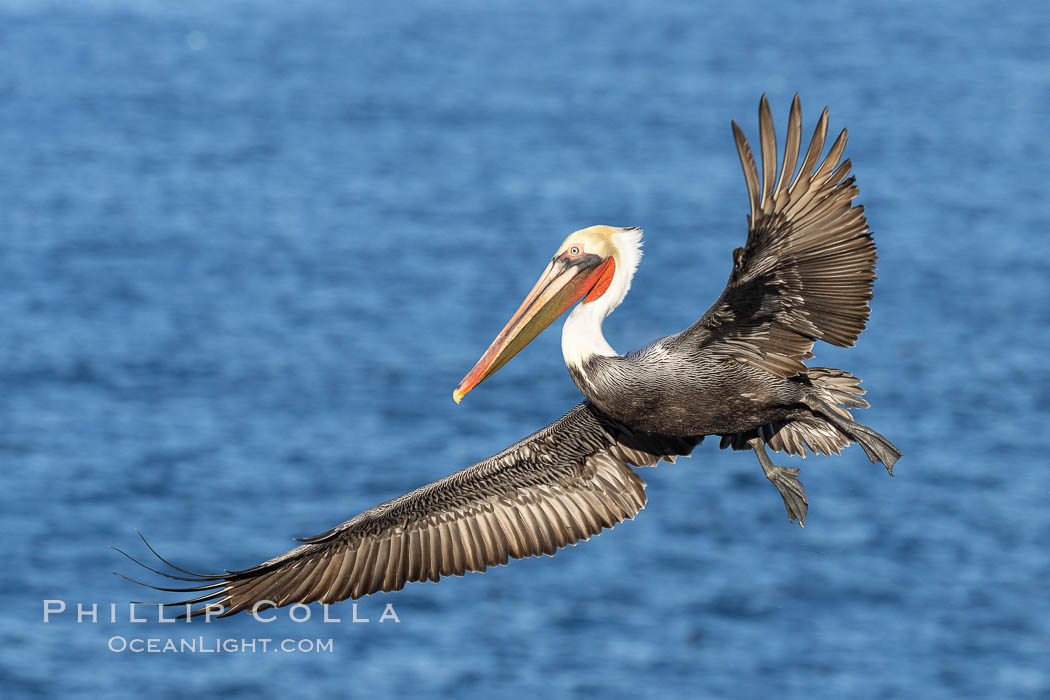
California brown pelican in flight, spreading wings wide to slow in anticipation of landing on seacliffs.
Image ID: 37408
Species: Brown Pelican, Pelecanus occidentalis californicus, Pelecanus occidentalis
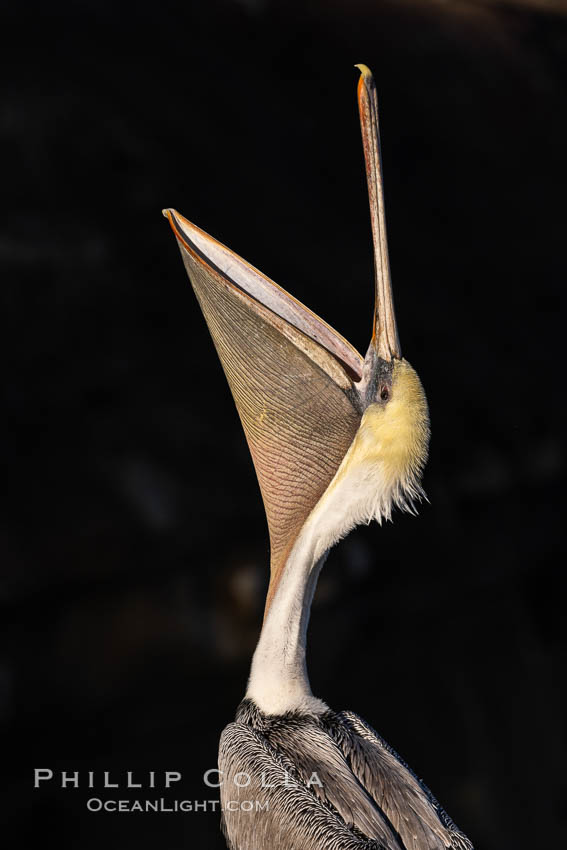
California Brown Pelican head throw, stretching its throat to keep it flexible and healthy.
Image ID: 37438
Species: Brown Pelican, Pelecanus occidentalis californicus, Pelecanus occidentalis

California brown pelican portrait with breeding plumage, note the striking red throat, yellow and white head.
Image ID: 37567
Species: Brown Pelican, Pelecanus occidentalis, Pelecanus occidentalis californicus
Location: La Jolla, California, USA

Double-crested cormorant nuptial crests, tufts of feathers on each side of the head, plumage associated with courtship and mating.
Image ID: 36845
Species: Double-crested cormorant, Phalacrocorax auritus
Location: La Jolla, California, USA
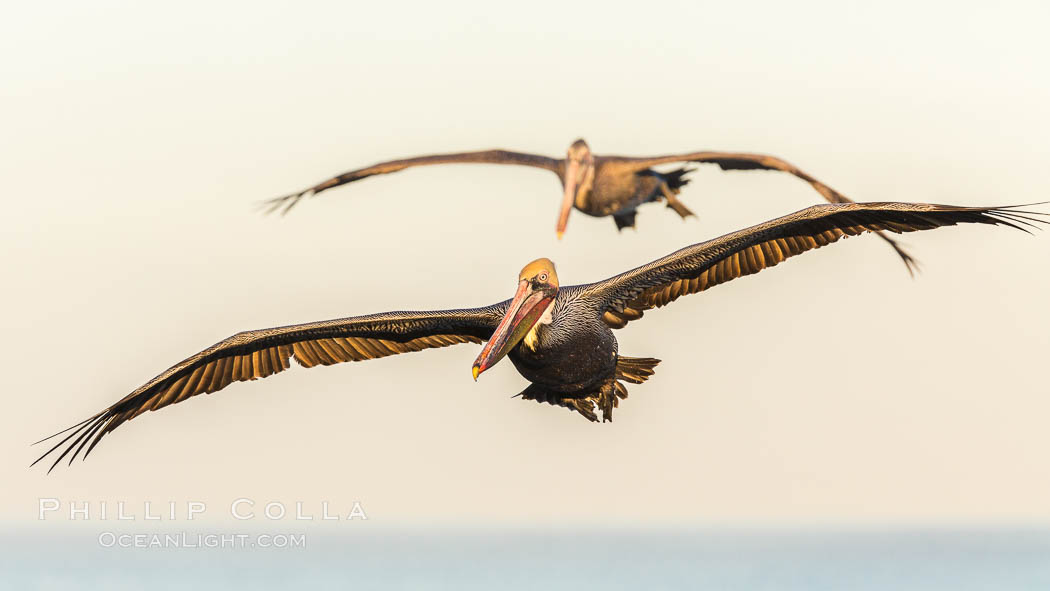
Brown pelican in flight. The wingspan of the brown pelican is over 7 feet wide. The California race of the brown pelican holds endangered species status. In winter months, breeding adults assume a dramatic plumage.
Image ID: 28962
Species: Brown pelican, Pelecanus occidentalis, Pelecanus occidentalis californicus
Location: La Jolla, California, USA

Young California sea lions playing underwater, Coronados Islands, Baja California, Mexico.
Image ID: 35853
Species: California sea lion, Zalophus californianus
Location: Coronado Islands (Islas Coronado), Baja California, Mexico

Portrait of a young California sea lion underwater, Coronados Islands, Baja California, Mexico.
Image ID: 35859
Species: California sea lion, Zalophus californianus
Location: Coronado Islands (Islas Coronado), Baja California, Mexico
